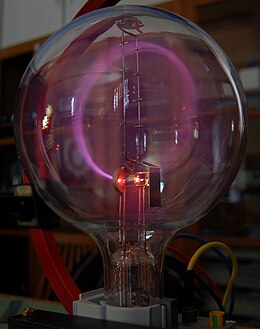1885 ⟶ Eugen Goldstein Names Cathode and Canal Rays
Eugen Goldstein names the cathode ray, later discovered to b...Year
1875
1884
1885
1888
1898
🔬 William Crookes Invents the Crookes Tube
William Crookes invented the Crookes tube and studied cathode rays.⟶

Crookes TubeCathode RaysPhysicsVacuum TubeCrookes19th Century ScienceX-ray
 United Kingdom
United Kingdom🔥 Boltzmann Derives Stefan Radiation Law
Boltzmann derives Stefan radiation law⟶

PhysicsThermodynamicsRadiationStefan-Boltzmann LawLudwig Boltzmann19th Century
 Austria
Austria💡 Eugen Goldstein Names Cathode and Canal Rays
Eugen Goldstein names the cathode ray, later discovered to be composed of electrons, and the canal ray, later discovered to be positive hydrogen ions that had been stripped of their electrons in a cathode ray tube. These would later be named protons.⟶

PhysicsAtomic PhysicsCathode RaysCanal RaysEugen GoldsteinEarly Atomic Theory19th Century
 Germany
Germany🔢 Johannes Rydberg: Rydberg Formula

PhysicsAtomic PhysicsSpectroscopyRydberg FormulaJohannes RydbergQuantum Mechanics19th Century
 Sweden
Sweden⚛️ Wien Demonstrates Deflection of Canal Rays by Magnetic Fields
Wilhelm Wien demonstrates that canal rays (streams of positive ions) can be deflected by magnetic fields, and that the amount of deflection is proportional to the mass-to-charge ratio. This discovery would lead to the analytical technique known as mass spectrometry.⟶

PhysicsMass SpectrometryIonCanal RaysMagnetic FieldsWilhelm WienAnalytical Chemistry19th Century Physics
 Germany
Germany